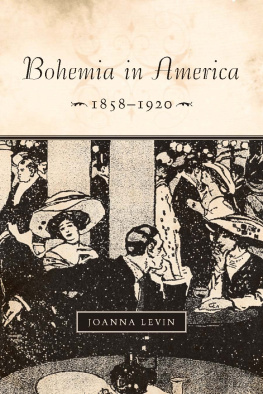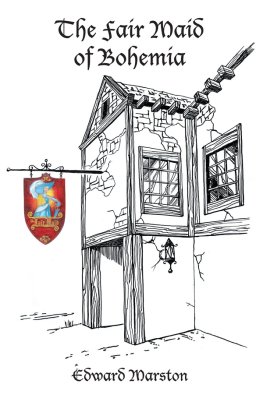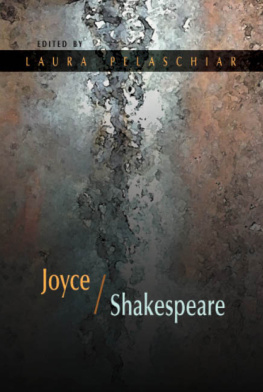Henri Murger, The Bohemians of the Latin Quarter: Original Preface, 1850, in On Bohemia: The Code of the Self-Exiled , ed. Csar Graa and Marigay Graa (New Brunswick, NJ: Transaction Publishers, 1990), 45. Self-proclaimed British Bohemians also grappled with Murgers statement and attempted (somewhat defensively) to locate a Bohemian geography within their own nation. For example, in 1907, Arthur Ransome championed this London Bohemia of ours, whose existence is denied by the ignorant. He admitted: Our Villons do not perhaps kill people, but they are not without their tavern brawls. They still live and write poetry in the slums. Ransome, Bohemia in London (New York: Dodd, Mead, and Co.,1907), 10.
William Dean Howells, Literary Friends and Acquaintance: A Personal Retrospect of American Authorship (1900; repr., New York: Harper and Brothers, 1901), 68.
James Jeffrey Roche, Life of John Boyle OReilly: Together with His Complete Poems and Speeches (New York: Cassell Publishing Co., 1891), 10.
Harry T. Levin, The Discovery of Bohemia, in Literary History of the United States , ed. Robert E. Spiller (New York: Macmillan, 1948), 1066.
Richard H. Brodhead, The American Literary Field, 18601890, in The Cambridge History of American Literature , vol. 3. Prose Writing 18601920 , ed. Sacvan Bercovitch (Cambridge: Cambridge University Press, 2005), 41. David Weir has recovered a similarly neglected tradition of self-defined American Decadents in turn-of-the-century America. Though at times the concepts of the Bohemian and the Decadent converged (as both Weir and this study discuss), Weir quite rightly recognizes that the two terms were not simply interchangeable. See David Weir, Decadent Culture in the United States: Art and Literature in the American Grain, 18901926 (Albany: State University of New York Press, 2008).
Jerrold Seigel, Bohemian Paris: Culture, Politics, and the Boundaries of Bourgeois Life, 18301930 (New York: Penguin Books, 1986), 5.
As Mary Gluck has argued in Popular Bohemia: Modernism and Urban Culture in Nineteenth-Century Paris (Cambridge, MA: Harvard University Press, 2005), Murger himself authorized two somewhat contradictory views of Bohemia. On one level, he dramatized the extent to which the artists life and calling stood for enjoyment and spontaneity in opposition to puritanical self-restraint and a rigid work ethic (16). On another level, he often reduced [Bohemia] to a form of apprenticeship in the artists life, viewing it as a prelude to bourgeois professionalism (19). The view of Bohemia as a deeply subversive phenomenon has had many adherents, in life and in scholarship. For example, the historian Elizabeth Wilson argues that Bohemia was the Other of bourgeois society, that is to say it expressed everything the bourgeois order buried and suppressed. In that sense it was an image of utopia. Bohemians: The Glamorous Outcasts (New Brunswick, NJ: Rutgers University Press, 2000), 241. As we will also see, many other participants and scholars have deemphasized the oppositional potential of Bohemia, either viewing it (critically) as complicit with bourgeois values and practices or (positively) as a safe and fleeting lark.
Seigel, Bohemian Paris , 12.
Albert Parry, Garrets and Pretenders: A History of Bohemianism in America (1933; repr., New York: Dover Publications, 1960), xxiv.
Ibid., xxiii.
Akhil Gupta and James Ferguson, Culture, Power, Place: Ethnography at the End of an Era, in Culture, Power, and Place: Explorations in Critical Anthropology , ed. Akhil Gupta and James Ferguson (Durham, NC: Duke University Press, 1998), 13.
Shakespeares The Winters Tale mysteriously invokes the seacoast of Bohemia. Since the country of Bohemia in what is now the Czech Republic does not have a seacoast, self-declared Bohemians have felt even more free to claim that Bohemia existed most fully within the imaginationor in any location that they might choose to realize their mythic territory.
James L. Ford, Seeing the Real New York: Trip No. 4Bohemia, Cosmopolitan 40, no. 6 (1906): 712.
Daniel H. Borus, The Strange Career of American Bohemia, American Literary History 14, no. 2 (2002): 376. The phrase lanes and byways occurs in John Moran, Studio Life in New York, Art Journal (1879): 343.
William Reimer, Bohemia: The East Side Cafes of New York (New York: Caterer Publishing Co., 1903), 3.
Edward W. Soja, Thirdspace: Journeys to Los Angeles and Other Real-and-Imagined Places (Oxford: Blackwell Publishers, 1996), 6.
Sara Blair, Cultural Geography and the Place of the Literary, American Literary History 10, no. 3 (1998): 546. Blairs review essay draws on the work of such cultural geographers as David Harvey, Arjun Appadurai, Saskia Sassen, and Soja.
Ibid., 550.
Sacvan Bercovitch, Rites of Assent: Transformations in the Symbolic Construction of America (New York: Routledge, 1993), 59.






